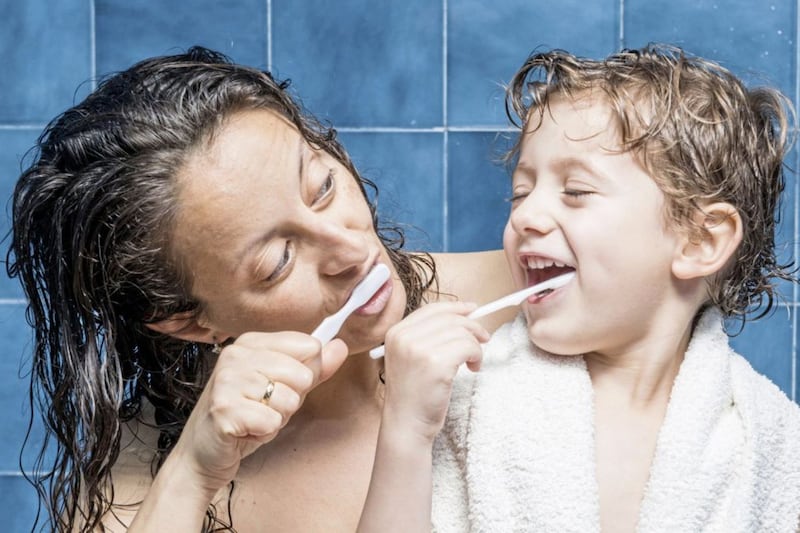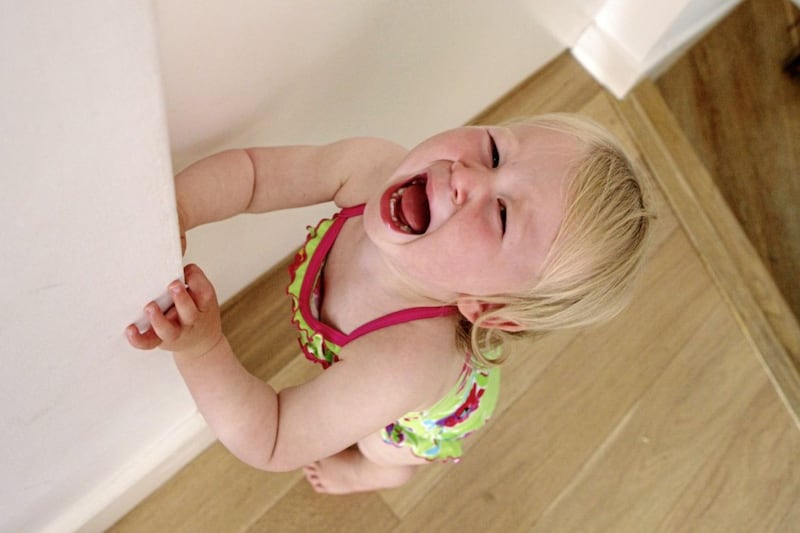ALL parents love to see a great big toothy grin on their children’s faces – but that gorgeous smile needs looking after.
The Oral Health Foundation’s (OHF) (dentalhealth.org) National Smile Month (smilemonth.org) (May 17-June 17) is aiming to highlight important oral health issues to help prevent tooth decay in both adults and children.
Dr Ben Atkins, president of the OHF, says: “It’s really important that as parents we help equip our children with the right tools so they can look after their oral health. By instilling the importance of a healthy smile, as well as the importance of regular dental visits, you can set your child up with a healthy smile for life.”
And Susie Lloyd, a dentist at Bupa Dental Care (bupa.co.uk/dental), and mother of two young children, points out that it’s all too easy to give in to children’s pleas for snacks and sugary drinks, but warns: “Certain foods and drinks can take their toll on children’s teeth, so how can we get the balance right, letting them enjoy the things they like but looking after their teeth simultaneously? Apart from not buying snacks and treats, some strategies can help.”
Follow these steps for starters…
1. Take them to the dentist early
The OHF recommends taking children to the dentist before their first birthday and then taking them as often as the dentist suggests. “By taking a child while they’re young, you can get them used to the sights and sounds of a dental practice, helping them feel more comfortable for future visits,” explains Atkins.
2. Get them used to brushing
Help babies with cleaning their teeth, and gradually give them more responsibility, advises the OHF. As soon as the first baby teeth start to appear, you should start to clean them. “At first you may find it easier to use a piece of clean gauze or cloth wrapped around your forefinger,” suggests Atkins. “As more teeth appear, you’ll need to use a baby toothbrush. Use a pea-sized smear of fluoride toothpaste and gently massage it around the teeth and gums.”
Lloyd says children and adults should brush using a light pressure, moving the brush in small, light circles, and making sure all surfaces of the teeth are covered, particularly the junction between the teeth and gums.
3. Give them a hand
The OHF says it can be easier to clean baby teeth if you cradle the baby’s head in your arms, but as the child gets older, that will obviously get more difficult, and parents can gradually give more responsibility for teeth cleaning to the child. They recommend parents supervise children’s brushing until at least the age of seven years, to ensure they’re brushing correctly and for two minutes.
4. Use the right toothpaste
The OHF says the first ingredient you should look for in children’s toothpaste is fluoride, which helps protect teeth from decay and erosion. All children up to three years old should use a toothpaste with a fluoride level of at least 1,000ppm (parts per million). After three years, they should use a toothpaste that contains 1,350ppm to 1,500ppm. Atkins says: “A pro-tip when it comes to brushing for both you and your child is to remember to spit not rinse. By not rinsing it keeps the fluoride on your teeth for longer and therefore grants your teeth protection for longer.”
Lloyd adds: “Try to avoid using a whitening toothpaste on children’s teeth. They can be very abrasive, and enamel on baby teeth is thinner than permanent teeth.”
5. Be careful not to overbrush
Lloyd says overbrushing can damage gums and cause an increased rate of enamel abrasion, which can be a problem if a child or young person is consuming high amounts of acidic fizzy drinks. “Acid erosion and tooth brushing abrasion significantly speed up the amount of tooth surface loss,” she warns.
6. Set a good example
You are the best role model for showing your children how to look after their smile, and Lloyd suggests “brushing together to make sure everyone brushes for the full two minutes. Show your children you clean thoroughly, yet gently.”
7. Only water during the night
If children have milk before bed, they should brush their teeth afterwards, and then only drink water till the morning, says Lloyd. Leaving bottles of milk or juice in a cot overnight is the leading cause of nursery (or bottle) caries (baby tooth decay). Juice contains sucrose, and milk contains maltose which are forms of sugar that will sit on the teeth overnight.
8. Cut down on sugar
The OHF says parents should try to avoid sugary food and drinks in their children’s diet as much as possible. “The first step to cutting down your child’s sugar intake is to be aware of how much sugar they’re already consuming,” says Atkins. “Always check the label of products before you buy, and if they’re high in sugar, consider swapping them for less sugary or sugar-free alternatives.”
Lloyd adds: “If children have sugary food and drink, the best time to consume it is with, or immediately after, a meal.”
9. Be frugal with fruit
When it comes to fruit, moderation is the key, explains Lloyd. Children should avoid too much highly citric and highly acidic fruit, so eating apples and bananas is better than eating a lot of oranges. And it’s best not to brush immediately after eating or drinking something highly acidic, she explains, as acid softens tooth enamel, so scrubbing away immediately causes more abrasion and loss of enamel, as soft enamel is more easily removed.
10. Chocolate or sweets?
While chocolate isn’t tooth-safe, Lloyd says it’s less damaging than sticky, sugary sweets. Highly acidic sweets can attack the enamel on young teeth, whereas chocolate is less acidic and melts quickly, so it clears from the mouth more rapidly.








